The way you store your film can have a huge impact to the quality of your photos after they’re developed. Film stocks ranging from black & white to color negatives, and 35mm to 120mm, all have a variety of needs when it comes to storage.
There are several factors that could be at play, including the temperature film is stored in, humidity, the elements (such as dust, water, potential light exposure, X-rays from airport security) – the list goes on!
It can seem quite daunting to constantly monitor something as unassuming as storage, but you’ve come to the right place. Check out our quick guide on how to store film and have your images come out in tip-top shape!
Want more tips for film photography? Join our mailing list, and check out our several other film photography guides.
Storing Unexposed Film
Most concerns around storing film are for unexposed film: aka, unused rolls of film that have yet to be opened, inserted into a camera, and shot with. Here are some storage options to ensure that your unexposed film is kept safe and ready to go for capture!
What happens to unexposed film in storage?
There are several factors that can affect your film when left in storage. High temperatures, exposure to sunlight, dust, moisture, and more.
Let’s start by saying that you should leave your film within its canister or plastic seal while you don’t intend on using it. Once the canister is opened or the seal is broken, your film is exposed to the elements mentioned earlier.
Exposure to these elements can lead to:
- Moisture build-up in your film caused by too much humidity – which can remove layers of cellulose acetate, or light-reactive emulsion
- Your film warping from heat exposure or rapid changes in temperature
- Dust getting into your film and imprinting itself, causing specks to show up in your scans (although, we realize sometimes this effect is desirable!)
For storage in dry areas, Kodak suggests temperatures of 75°F (24ºC) between a relative humidity of 20%-60%. This can be achieved by simply adjusting your thermostat, or if needed, purchasing an air conditioner that maintains a suitable temperature – as well as a humidifier or dehumidifier depending on your environment.
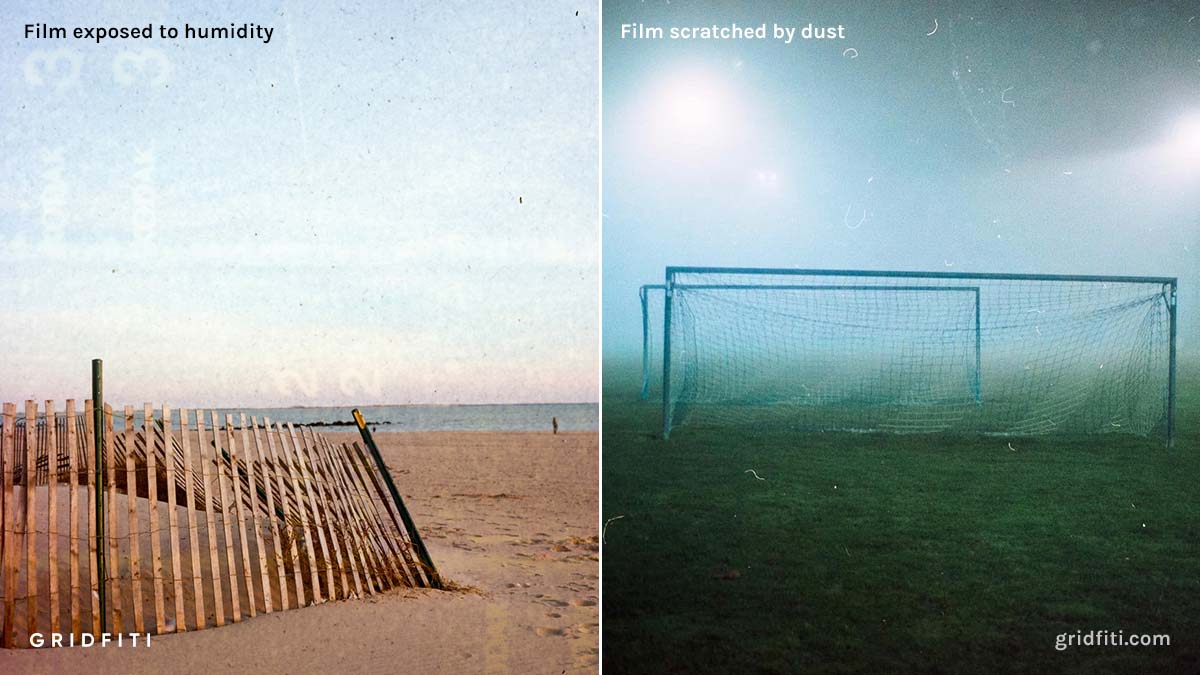 Photos by Jonathan Canlas and u/sabi-95 on Reddit
Photos by Jonathan Canlas and u/sabi-95 on Reddit
Refrigerating Film
You’ve probably seen your film shop’s repurposed soft drink fridges, or inside your favorite film photographer’s fridge, and for good reason. It’s no question that refrigerating film is one of the top methods of storing unexposed film – specifically, film that you don’t plan on using for a while.
Try to stick to these conditions below (shared by Kodak themselves) when storing your film for short or long term periods:
Short-Term Storage (less than 6 months):
- Storing in the fridge is fine
- 55°F (13°C) with a relative humidity below 60%
Long-Term Storage (more than 6 months):
- Storing in the freezer will get you the best results
- 0°F to -10°F (-18°C to -23°C) with a relative humidity below 60%
When you’re ready to use your film, be sure to let the film rest and reacclimatize to room temperature before shooting. We suggest taking the film out of the fridge or freezer the day before use to prevent condensation (which could lead to poorly exposed film or water droplets in your camera’s internals).
Check out these refrigerators for your film:
If you’ve got multiple rolls to store, or are storing your film in your main refrigerator, you may want to grab plastic fridge organization storage bins!
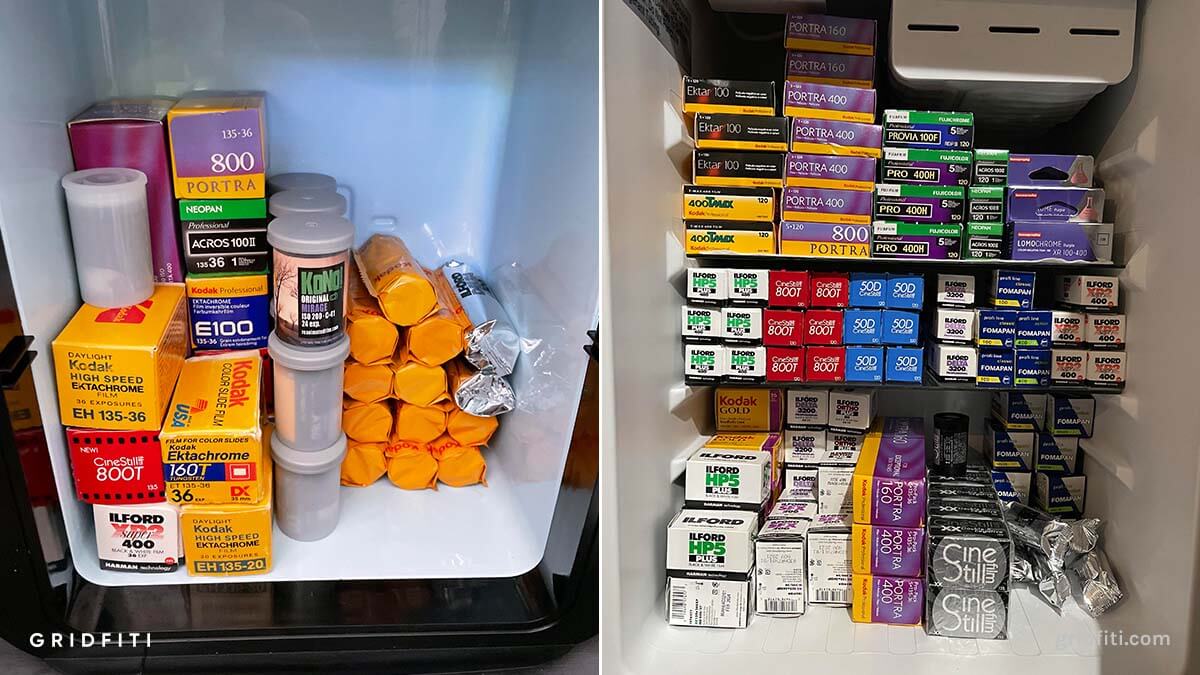 Photos by u/austbeam and u/ah876 on Reddit
Photos by u/austbeam and u/ah876 on Reddit
Storing Unexposed 35mm Film
The beauty of 35mm film rolls is that they’re the only type of film that comes with a built-in protective shell, which shields the film from light, dust, and moisture. Storing 35mm film is as easy as leaving them in their canisters, and within the dry or refrigerated conditions mentioned above.
You can go the extra mile and organize your film rolls into protective casing in large bundles, or smaller casing for transport from shoot to shoot.
To recap, storing film in the fridge is great for long-term storage – but when you plan on shooting in the near future, or want to safely transport your rolls, these storage cases are a great option.
Check out these 35mm film storage options:

Storing Unexposed 120 Film
120 (medium format) film comes with a different set of sensitivities compared to its 35mm counterpart. 120 film does not have any protective housing – it’s just the film rolled up around a reel. Because of this, the film is at risk of exposure to dust, moisture, and the worst part – light. We suggest always leaving 120 film in its seal, but once it’s out and exposed, you can transport it by storing it in anti-light casing.
Another thing to note is that when you roll 120 film back up after use, sometimes the adhesive is too weak to hold the film within its roll. We suggest always carrying a few rubber bands around so you can tighten that roll, mitigating any risks to light exposure and fogging.
Check out these 120 (medium format) film storage options:
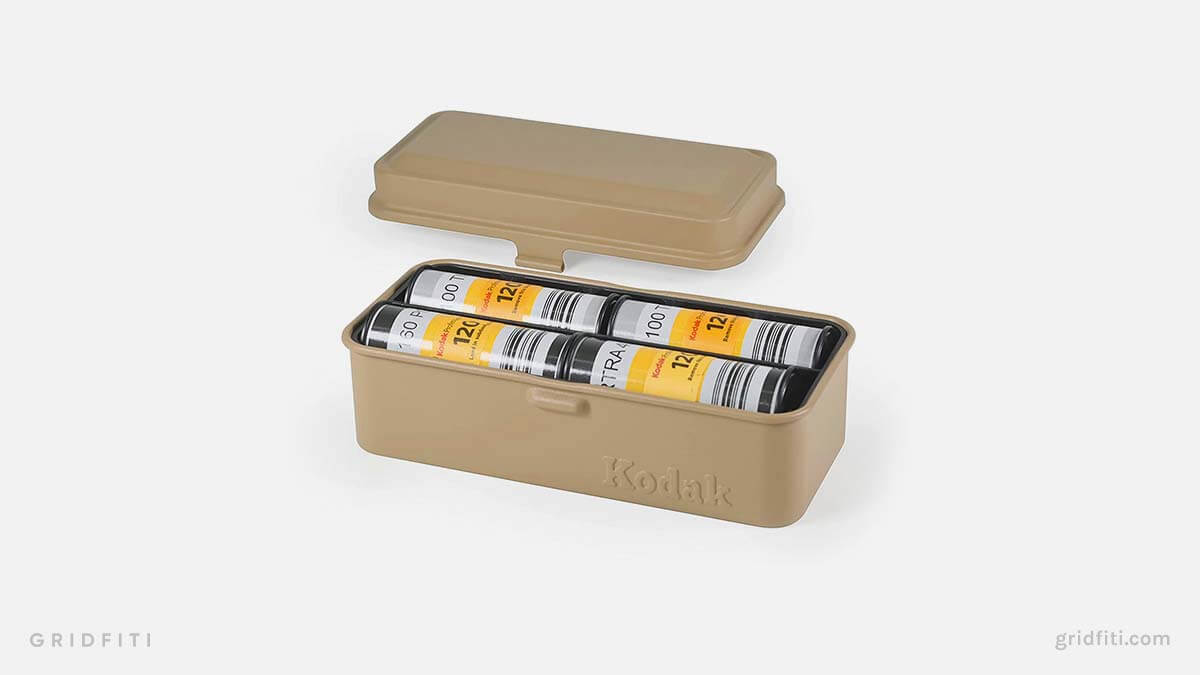
Storing Exposed Film
When we talk about storing exposed film, we’re referring to film that has been exposed to the images you’re capturing, finished in the camera, and rolled back up and waiting to be developed.
To put it simply: don’t store your exposed, finished rolls of film. Try to finish the roll of film and have it developed quickly.
We’re all guilty of leaving exposed film sitting in our cameras, or even leaving finished rolls sitting in storage before developing them – but the truth is, leaving exposed film out for long periods leads to the same deterioration as unexposed film left out – except in this instance, it’s happening to your precious images. If you must, keep your to-be-developed rolls stored in a dry area away from sources of heat or sunlight, but get that film developed as soon as you can!
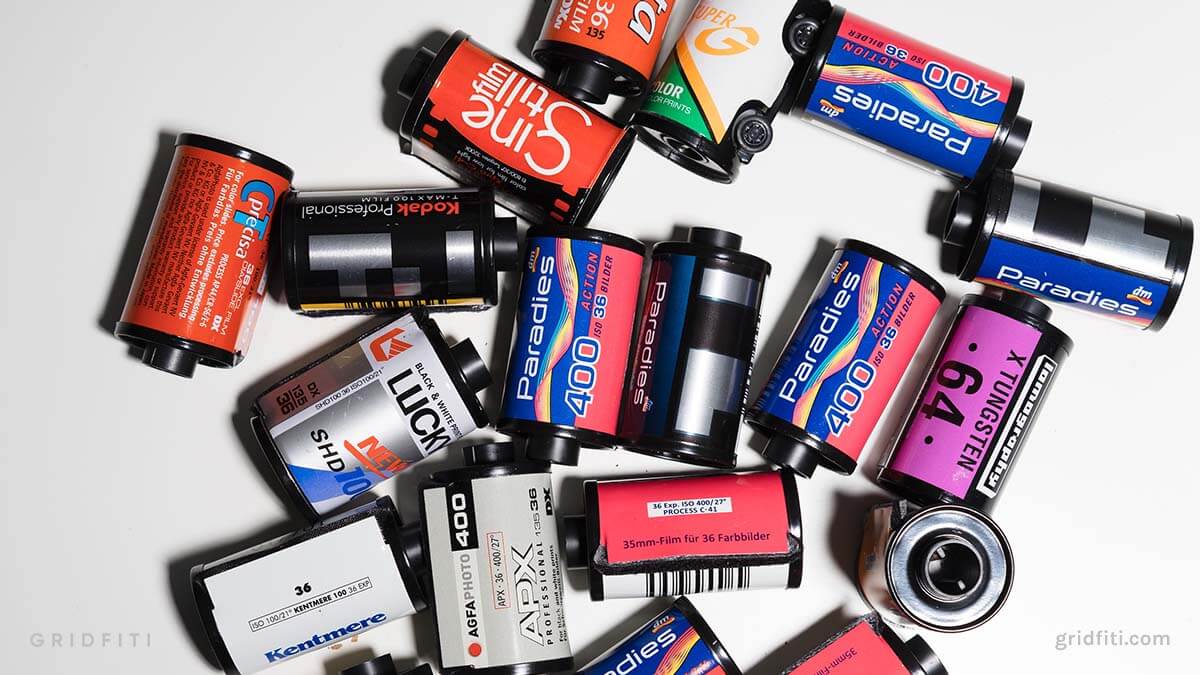
Storing Developed Film (Negatives)
Developed film is film that has gone through its full development process and has become scannable, storable negatives. Thankfully, storing developed film is a lot more straightforward than storing unexposed film – these strips made from plastic and cellulose won’t be as sensitive as they were in their unexposed form.
Developed film is often stored in archive sheets: thin plastic holsters to slide your film into and store within file folders or binders (think of those plastic sheets you may have stored Pokemon cards in). These sheets will protect your film from the obvious elements, like dust and moisture.
Once you have your negatives placed into sheets, it’s just a matter of putting them into either folders or binders within dry, room temperature environments, away from sunlight.
Many photographers will be surprised to find that film negatives stored in these conditions will come out virtually unscathed – allowing them to be scanned as if they were just freshly developed!
Check out these film storage sheets:
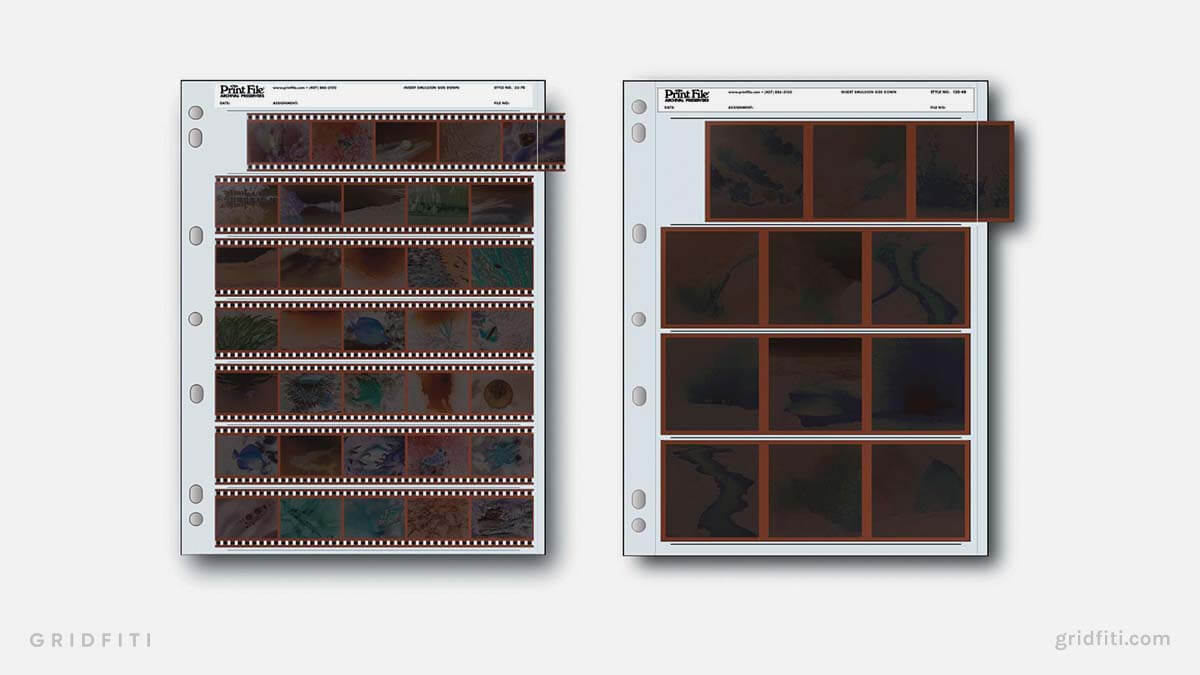
Did these film storage tips help? Are there any other tips you have for fellow film photographers? Let us know in the comments below!
Gridfiti is supported by its audience – when you buy something using the retail links in our posts, we may earn a small commission at no additional cost to you. Read more about our affiliate disclaimer.